First off, I am no Sega fan boy. I was a Nintendo kid growing up, and never owned any Sega consoles until my mid 30s. I started with a Commodore 64. After that, I was all Nintendo. I got a Gameboy in the early 90s. Then I owned a Super Nintendo in the mid 90s as my first proper console. I received a Nintendo 64 for Christmas 1997.
The Sega Master System is the 7th best selling console of all time in Australia, and Sega had quite the strong hold in Australia, even though the Master System failed in the USA.
Now the success of Sega can be region specific in Australia, as some retailers only stocked Nintendo products, such as Grace Bros until 1990, and Myer until 1991, and it has been reported that some other regional department stores would only sell Nintendo, so there is a chance the Master System was not popular in your neighbourhood. But overall, in Australia as a whole, is was the market leader 8 bit machine.
By 1993, Sega controls 65% of the Aussie market, and Nintendo take action and takes control from Mattel. It sells 650k units in Australia, sadly Nintendo or Mattel never publish their NES numbers, they only combine it with the SNES and very successful Game Boy.
I do have some nostalgia for the Sega Master System, however. It was the console my OSCH had in the early 90s (they later upgraded to a SNES however!). I would spend every school holiday at OSCH while being raised by a single full-time parent.
Oddly apart from watching Star Wars movies, and the daily ABC kids show, the other thing I remember is the Sega Master System they owned.
I can still hear the music of Wonder Boy and Alex Kidd In Miracle World to this very day in my head.
As I grew older, my close cousins, with whom I had grown up, also had a Sega Master System. This all gave me a taste of Sega 8-bit goodness. I gamed on my Commodore 64, Game Boy, and an Atari 2600 Jr. One of my friends gifted me the Atari when his family upgraded to an NES.
While doing a lot of research on 90s Video Game History in Australia, going over the newspaper articles, shop catalogues and game magazines, something surprised me, however.
Nintendo was not the market leader in Australia during the 8-bit console war. In fact, Nintendo struggled in its early years in the late 80s and early 90s in Australia.
The NES gained more popularity in the mid 90s as a budget console in Australia. However, the Master System remained in the lead in Australia to the end.
The Mega Drive also experienced huge success initially. It started the console wars off in Australia strong. However, the Super Nintendo became the most popular budget console of choice after the Master System. It wins the 16 bit console war in Australia.
Sega products in Australia were initially distributed by John Sands in the 80s, yes, the card company. Sega made a relatively unknown computer named the SC-3000, that actually sold and did alright in Australia, but not on the level as say the Commodore VIC20 or 64 did.
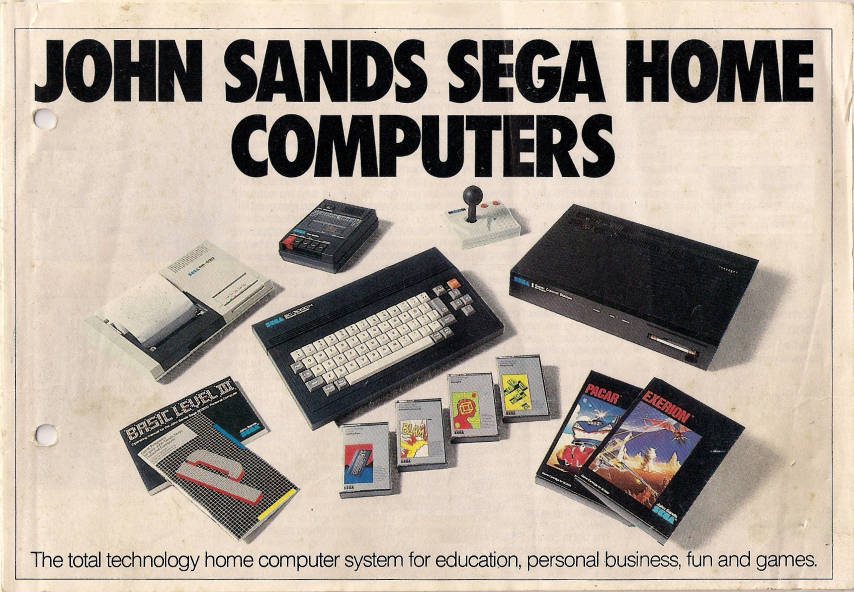
Australia was a home computer country in the mid to late 80s. Unlike our USA counterparts, home consoles did not catch on in the mid 80s. In fact, we did not get the Nintendo Entertainment System until mid-1987 in Australia, and the Master System arrived early 1988.
There is very little fanfare given to the Nintendo Entertainment System in 1986, the console and games were very expensive, and many Australians were too busy getting into their first computer, with the Commodore 64 dominating here. The NES launches in Australia for $295 for the console only without games. This price is roughly $950 today. There is also a deluxe pack available, which includes games and accessories, for $450, equivalent to $ 1,400 today.
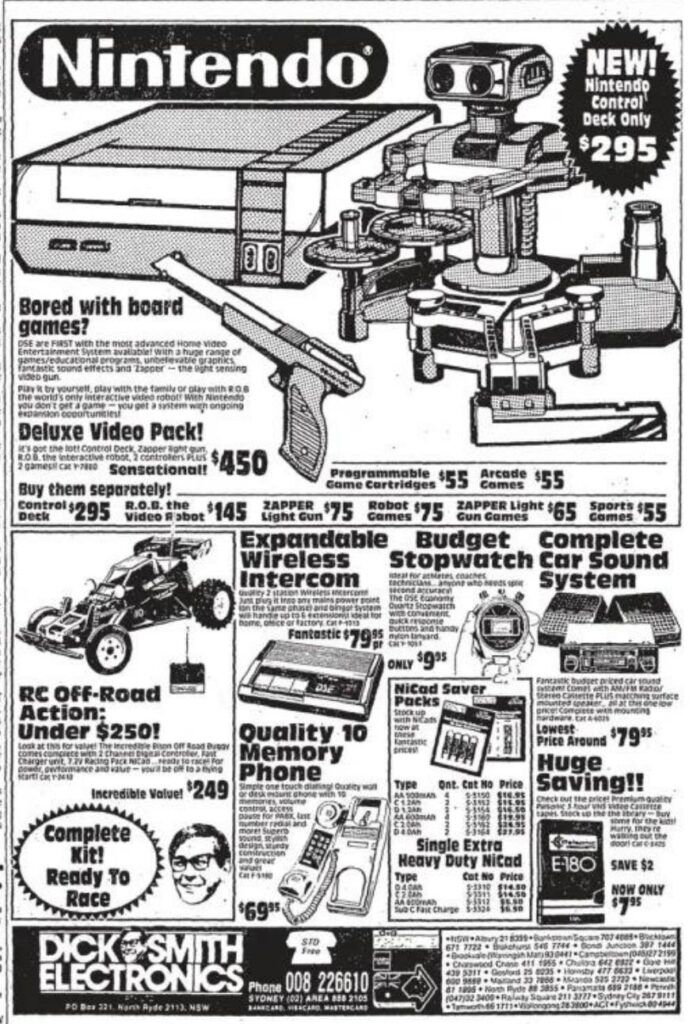
Mattel and Dick Smith are both officially distributors of the NES console in Australia initially. The Sega Master System was available in early 1988, roughly 6-8 months after the NES.
Ozisoft Australia distributed the Sega Master System in Australia.
Unlike Mattel that was a toy distributor, Ozisoft was a computer game distributor. Ozisoft was a major distributor of software for popular gaming machines in Australia. These included microcomputers such as the Commodore 64.
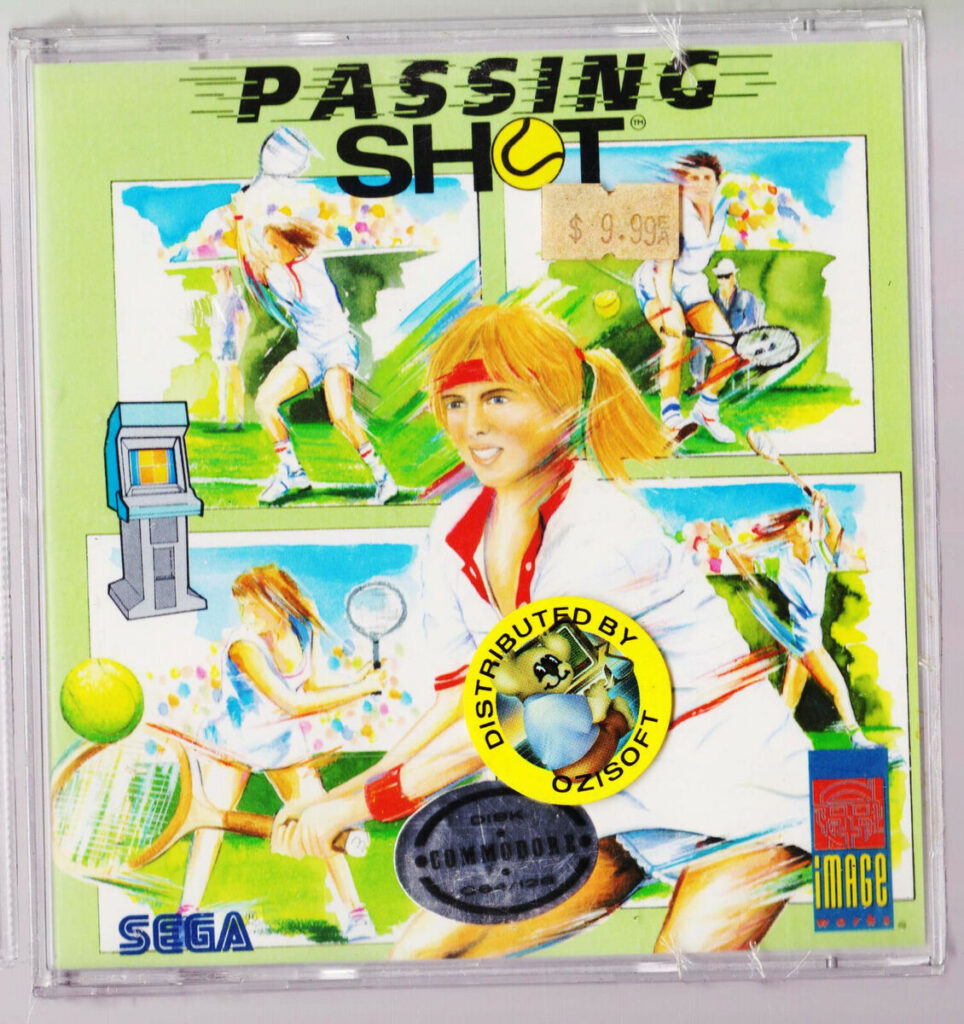
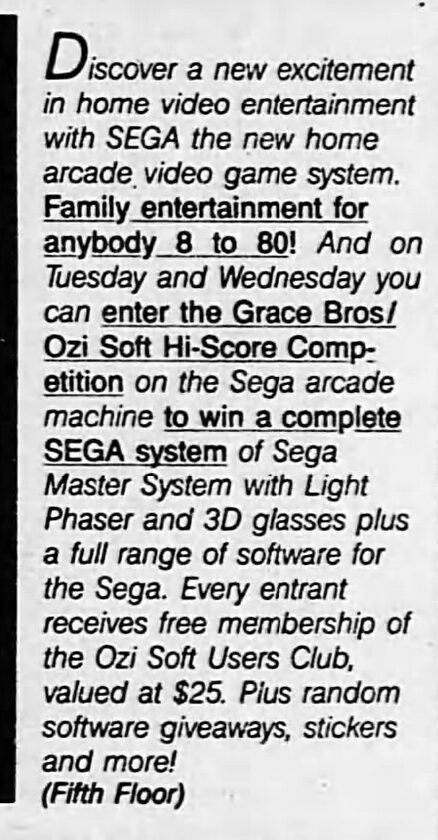
In April 1988, Sega show the Sega Master System at the 1988 International Hobby, Toy and Leisure Trade Fair. The prediction from the fair is the Sega Master System will be the hottest toy of 1988.
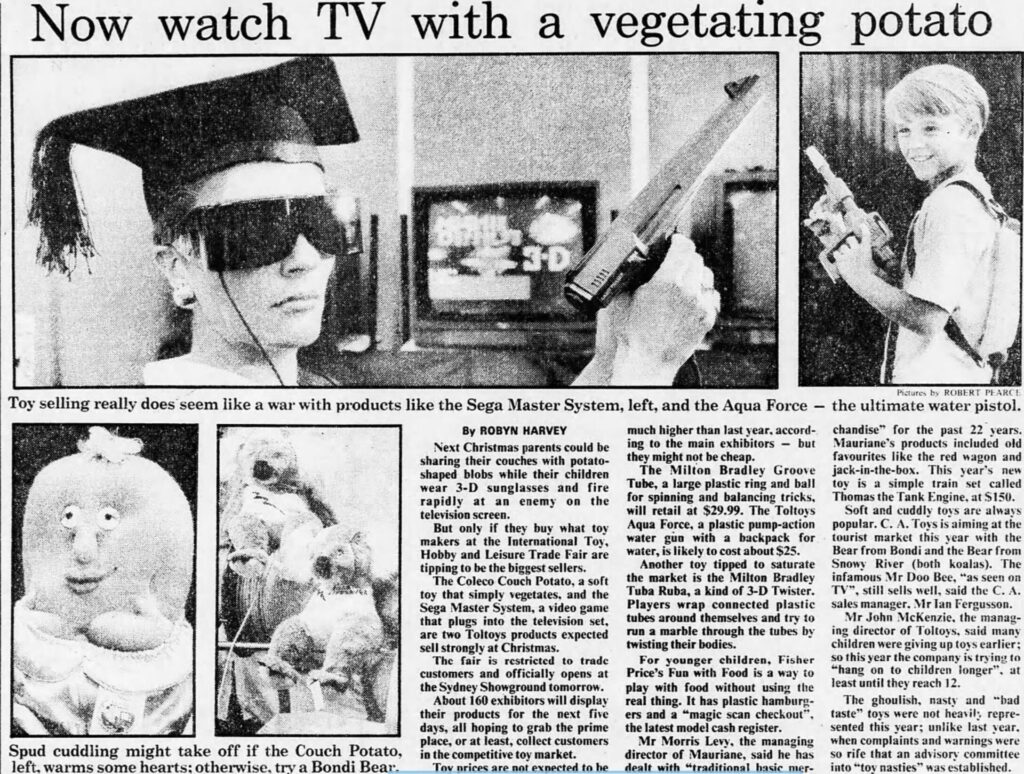
The Sega Master System launched at a price of $199 in Australia. Unlike Mattel, which is new to the gaming business in Australia, Ozisoft has close relationships with buyers and retailers. These relationships are especially strong in the small computer departments where games for things like the Commodore 64 were sold in the late 80s and early 90s.
Not only was Ozisoft an established major distributor in Australia, but Sega was also an established name in the 80s and 90s Arcade scene in Australia. This helped give Sega and Ozisoft an edge, giving the Sega Master System an edge in Australia. Oddly, major retail, Grace Bros, had NES exclusively in 1988, as did Myer. If you lived in a region with a Grace Bros in 1988, the NES was the console of choice. It would have dominated that region-specific market that Christmas.
However the Master System price was better than the NES, and the free game often made it more appealing to parents in the late 80s and early 90s.
Snail Maze or Hang On are the first games built into Australian Master Systems.
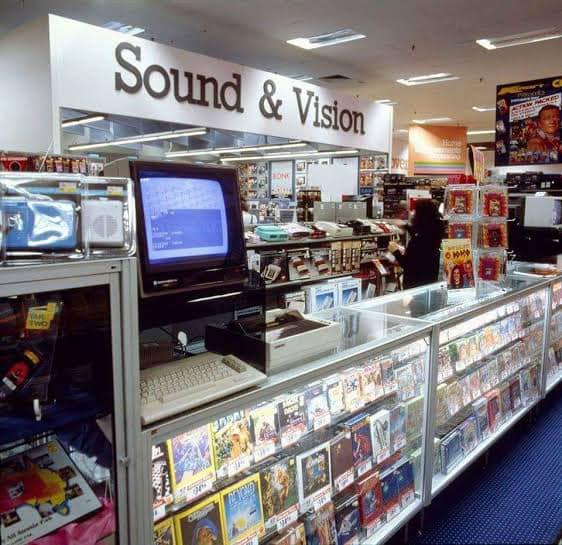
There is very little information on how well either the NES or the Master System sold for the 1988 Christmas. Home computing was still king in 1989. Aussies stuck with their microcomputers like the Commodore 64’s. These computers did more than just play games and had a thriving piracy scene.
Australia’s video game home console market was weird in the late 80s and early 90s. We were often a generation behind. Only rich families and hardcore games would buy the latest consoles such as the NES and Master System. Many hardcore gamers were also investing in Commodore’s next computer, the Commodore Amiga, or an IBM Dos PC.
The two other major players in the Australian console market were Atari and Intellivision.
In 1988, receiving a modern Atari 2600 (with 1970s technology) for Christmas was not uncommon. It was much cheaper, and kids were still getting them in the 1990s in Australia! I’m mentioning the budget market now, because soon, the Master System will replace the Atari 2600 as the Aussie gaming budget console of choice.
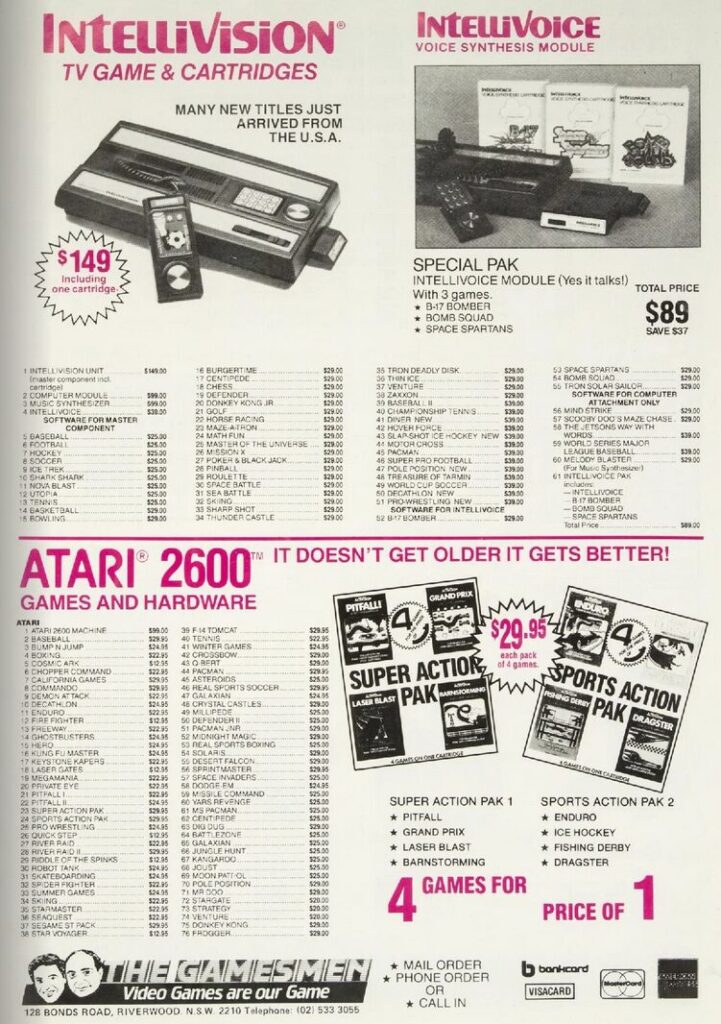
The price of consoles was high in 1988. You can see why Aussies stuck to micro computers here too due to our prices.
-Atari 2600 $99 ($275 today)
-Intellivision $149 ($415 today)
– Sega master System $199 ($554 today)
-NES (console pack only) $249 ($700 today)
The Sega Master System comes in two models. The original model is one of them. The more common and popular model in Australia is the Sega Master System II version. The Master System II was released in 1990.

The original model could not only read cartridges, but it could also read small cards that were cheaper than carts. Carts would cost between $59.95 to $79.95 and cards between $39.95 to $59.95.
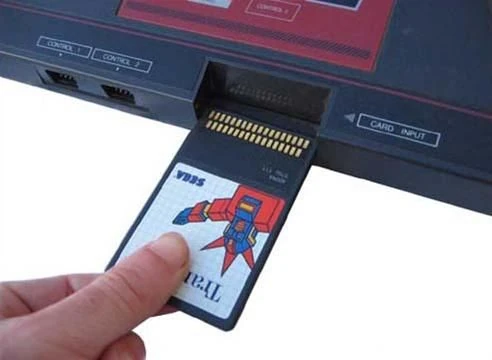

In 1989, things heat up in the Aussie console market. We see some major price cuts. The Sega Master System becomes extremely competitive in price and value. In 1989, Grace Bros announced you could finally buy the console from there in March 1989. It was sold Nintendo exclusively for the 88 Christmas.
I have a feeling the price drop to $159 and free game help Grace Bros stock the system alongside the NES, that was still $249 at this point without a game.
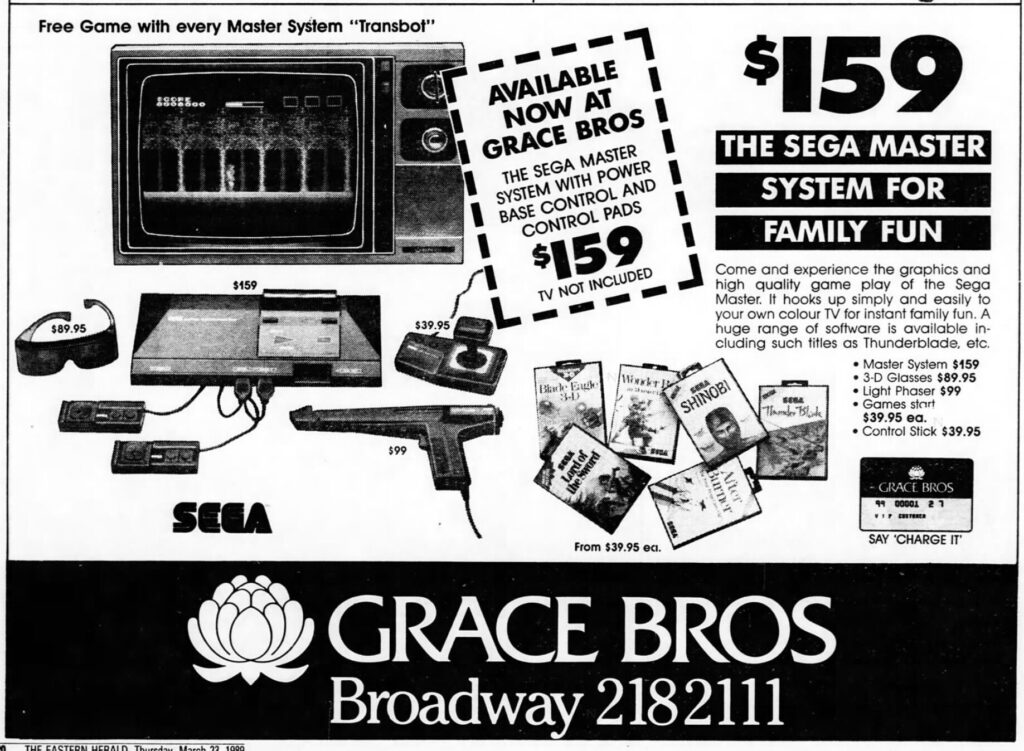
Sega and Ozisoft see’s massive sales in 1989. In April 1989, Sega sells 2000 consoles and its entire months shipment in the first two weeks of April 1989. In 1989, computers and gaming began shifting to the IBM PC platform. This shift moved away from Amiga and the aging Commodore 64.
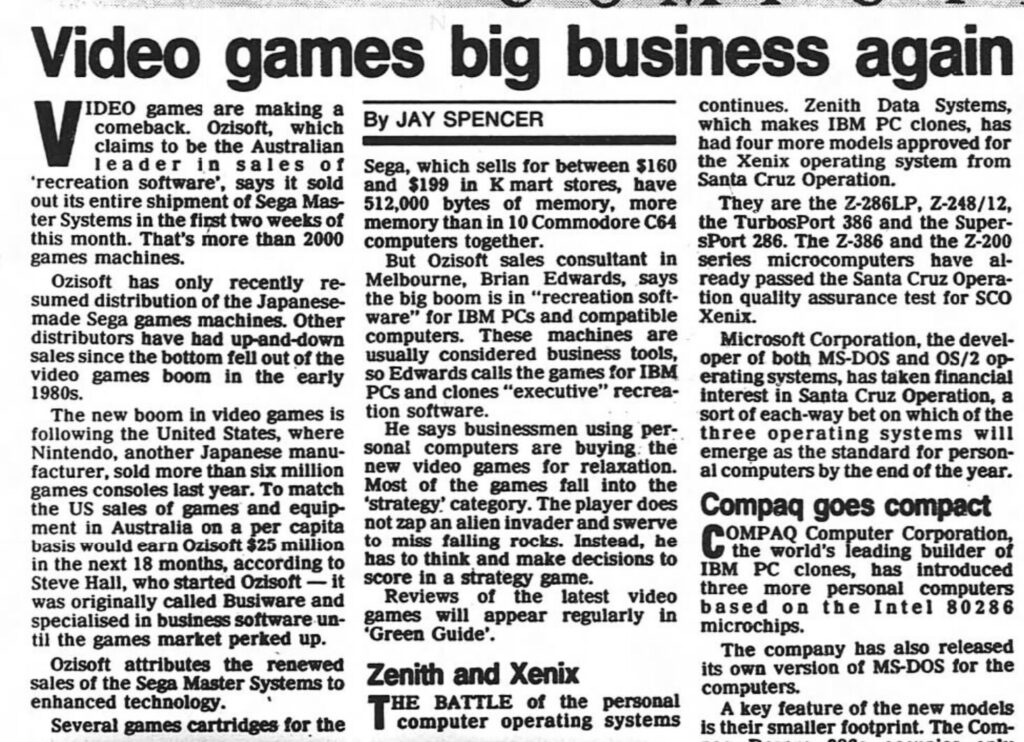

Christmas 1989 see’s both the NES and Master at the same price, and both drop to $149, however the Master System comes with two free game built in, and a second controller, making it a much more appealing to parents, no additional cost upfront for extra’s.

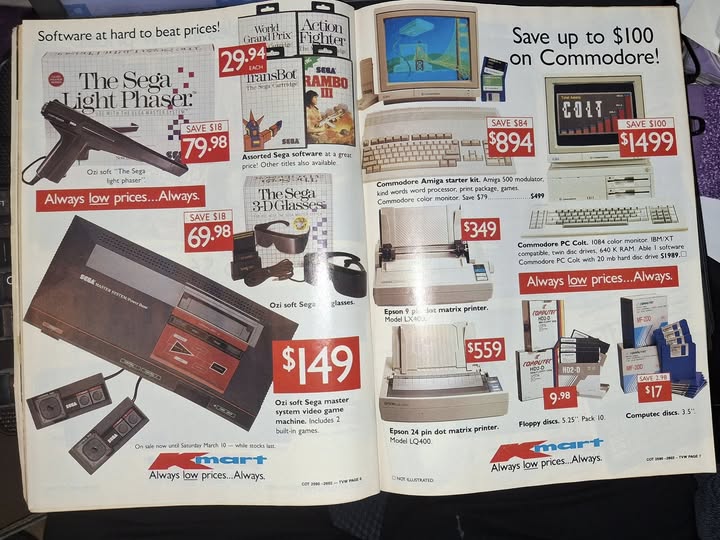
1990 is where we start to see video game consoles make an impact in Australia. Although Home Computers still dominate, in particular the Commodore 64 for the budget market, and the Commodore Amiga and IBM Compatible pcs for the higher end market, Aussie start to also pick up consoles. The prices remain the same for the consoles throughout 1990; however, Sega always contained a built-in game.
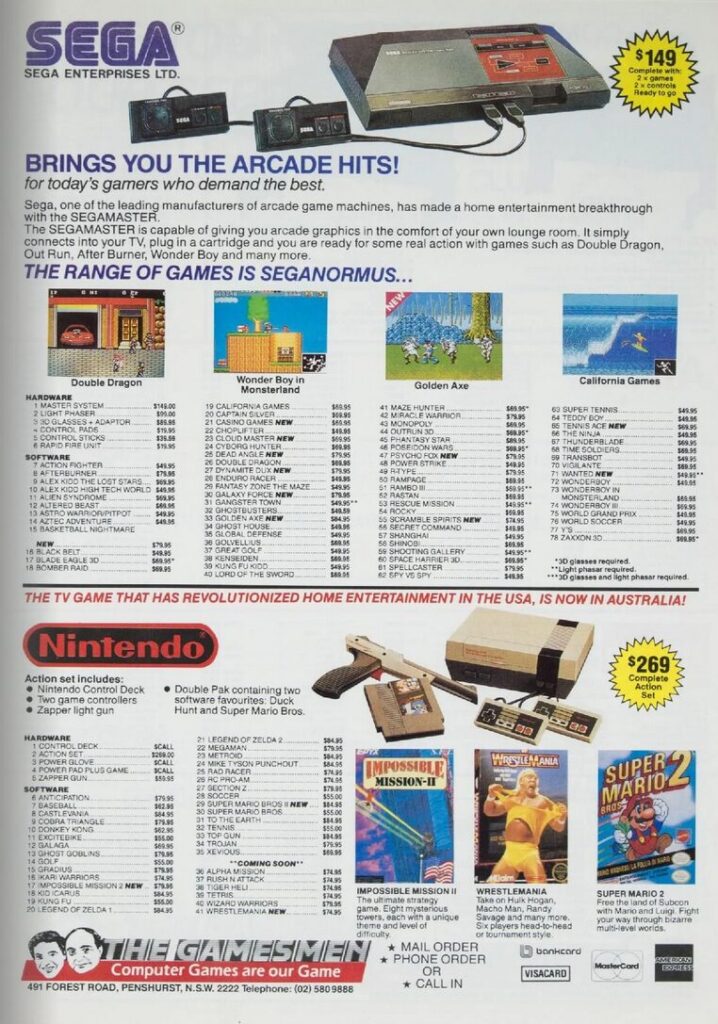
July 1990 also see’s Nintendo really pushed in Australia kids faces, as the kids movie The Wizard releases here. This is how many Aussie kids growing up become aware of Mario and the NES, while shifting away from aging machines like the Atari 2600 and Commodore 64. The Nintendo Game Boy is also released in 1990 in Australia, and Australian consumers are now more aware of Nintendo.
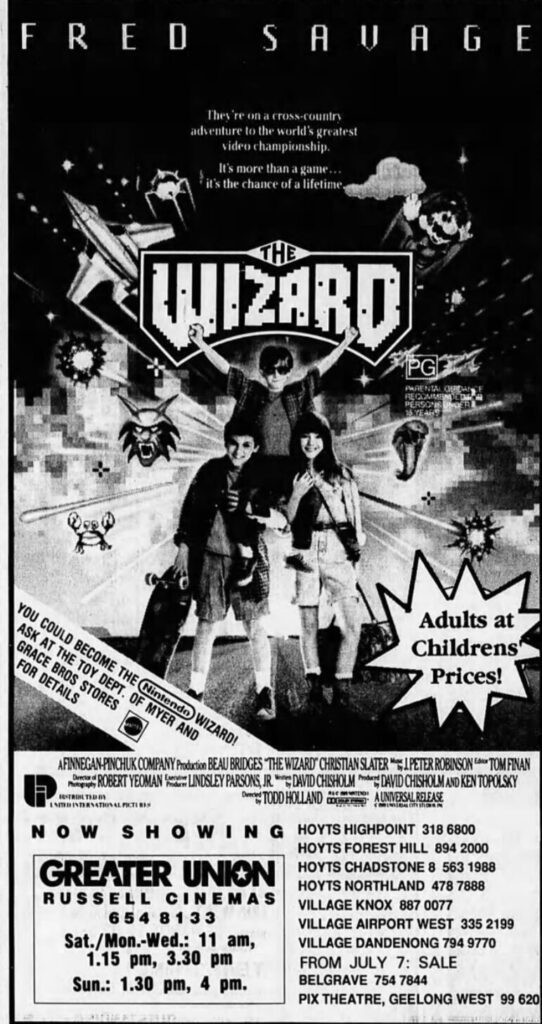
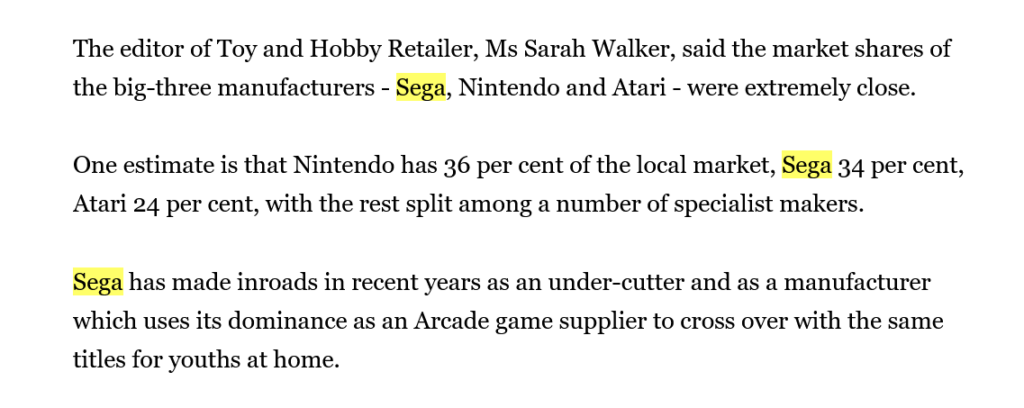
The overall market in October 1990 is roughly equal with Nintendo slightly ahead (thanks to the Game Boy, and the movie Wizard). 36% for Nintendo, 35% for Sega, and 24% Atari (Aussies were weird playing old Atari systems! games were super cheap).
However, this is where things take a major turn for Sega, towards the end of 1990, Sega released a new Sega Master System II in December 1990, a new, more modern 90’s 90s-looking console, with some features removed to reduce costs.
The new model Master System II retailed for $99 in 1990 ($240 today). The Sega Mega Drive was also released in Australia during December 1990, and retailed for $349 ($842 today) . The first game built into the Master System II is Alex Kidd in Miracle World, and for many Aussies, it is one of their favourite games!
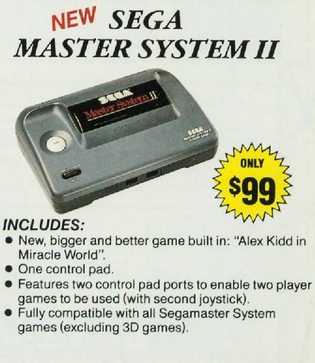
Sega in Australia now has a head start in the 16 bit race in Australia, not only that, it has a budget console for Aussie parents. This changes the course of the video game market in Australia. Oddly for 1990 Christmas, Nintendo reverted back to their Action optional bundle. They reduced the price to $279, ($680 today). This includes 2 games, 2 controllers, and a zapper.
250k Sega Master System units sell in Australia in 1990 alone, Nintendo and Mattel never publish their 1990 numbers for the NES alone, Sega does it, knowing they are the market home console leader.
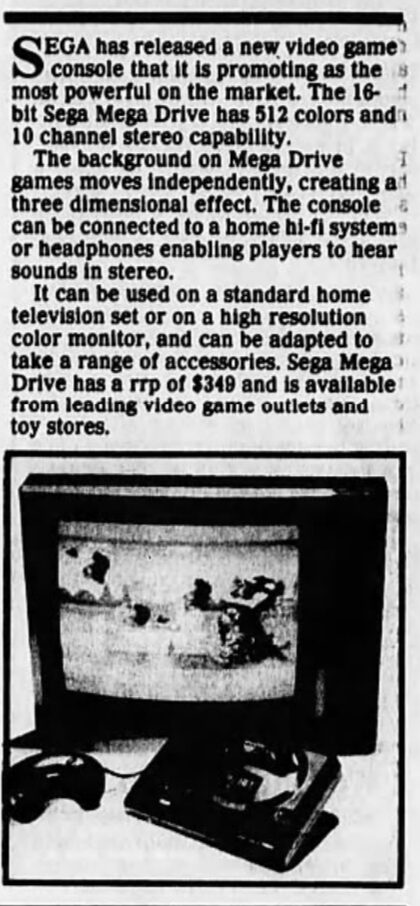
.
The gaming market was quite weird in 1992 for Aussies, who were also going through recession at the time, so many people losing jobs and watching their money. There was a clear budget market, as well as a high-end niche gamer market. The budget consoles are what sell in Australia, and the unlike America in the 80s’s, this is when most 8bit consoles enter consumers homes.
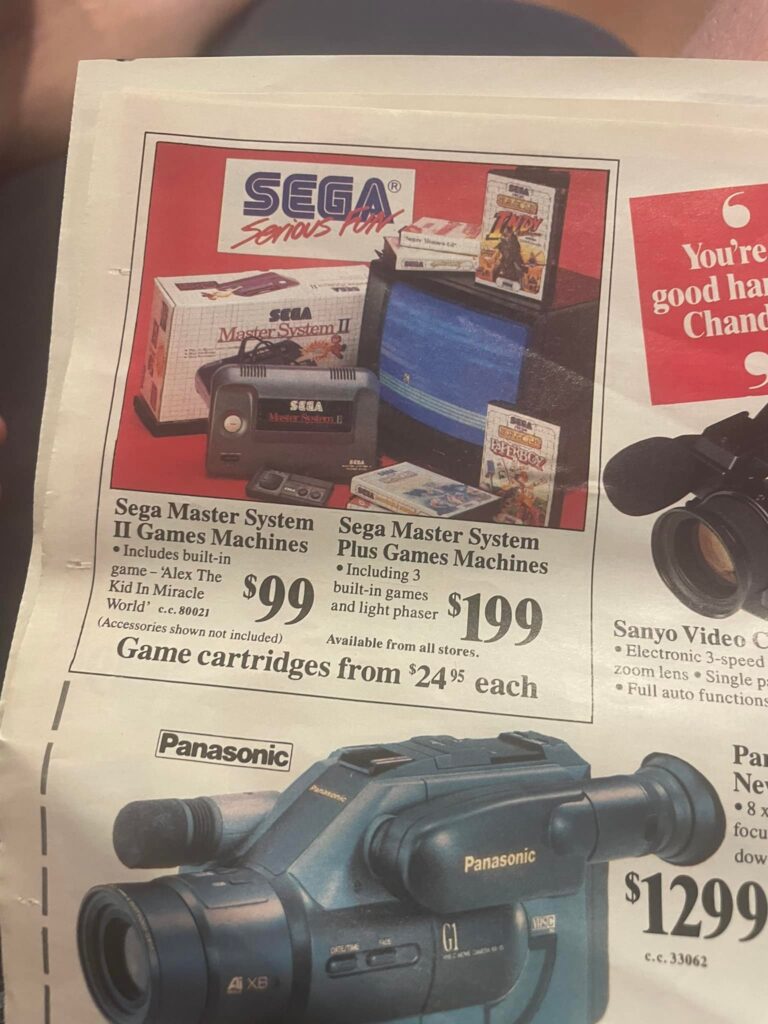
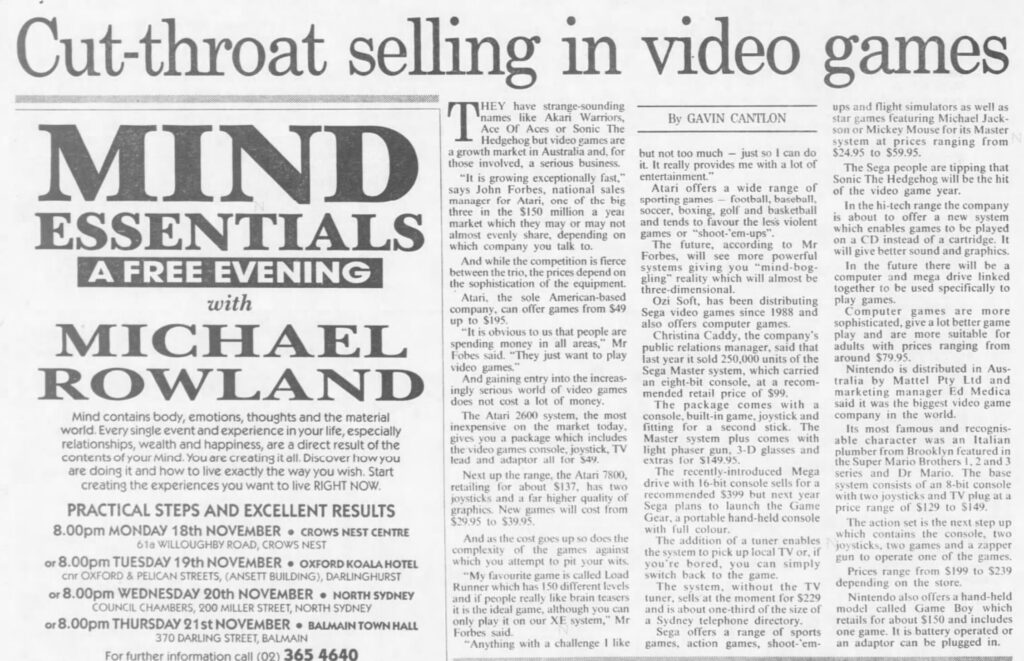
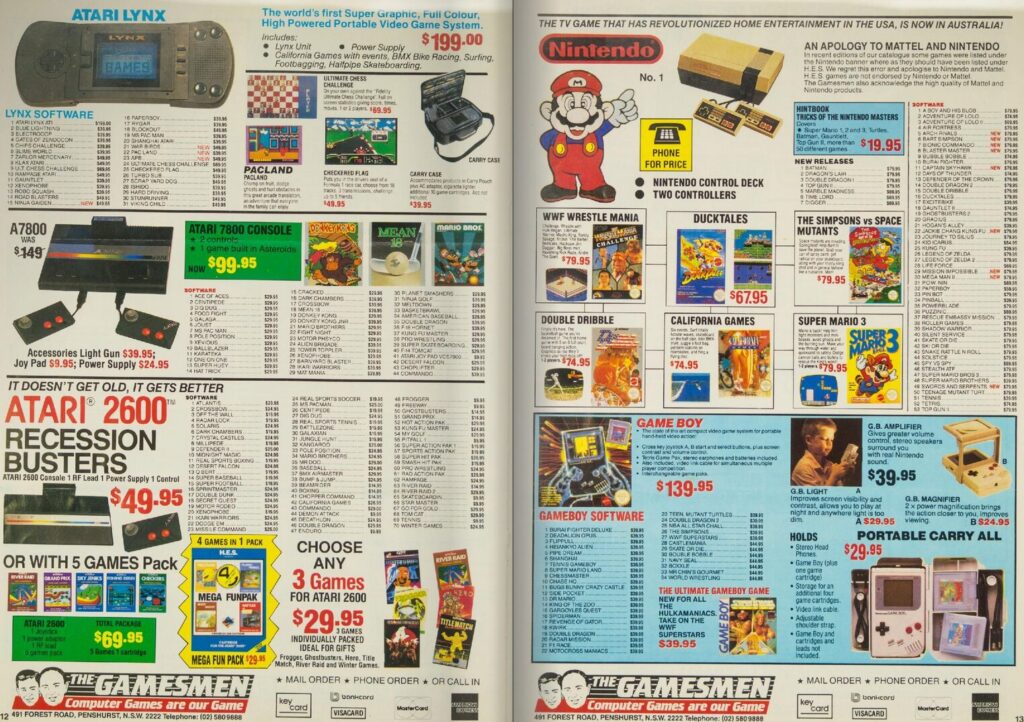
The Nintendo Game Boy goes crazy for the 1991 Christmas, and is one of the hottest-selling items that year. However in the console space, the Master System II proves very popular, with its built in free game, it is ready to go for people in the market for a budget, modern console.
Although Alex Kidd was a very popular video character, and just as popular as Mario for Aussie kids, Sega was about to change the game industry with a cool character that just screamed 90s attidude.
Sonic 1 launches on both the Sega Mega Drive and Master System , this was because the Game Gear used the same technology as the Master System, and many Game Gear games are released on the Master System, many never released in the USA.
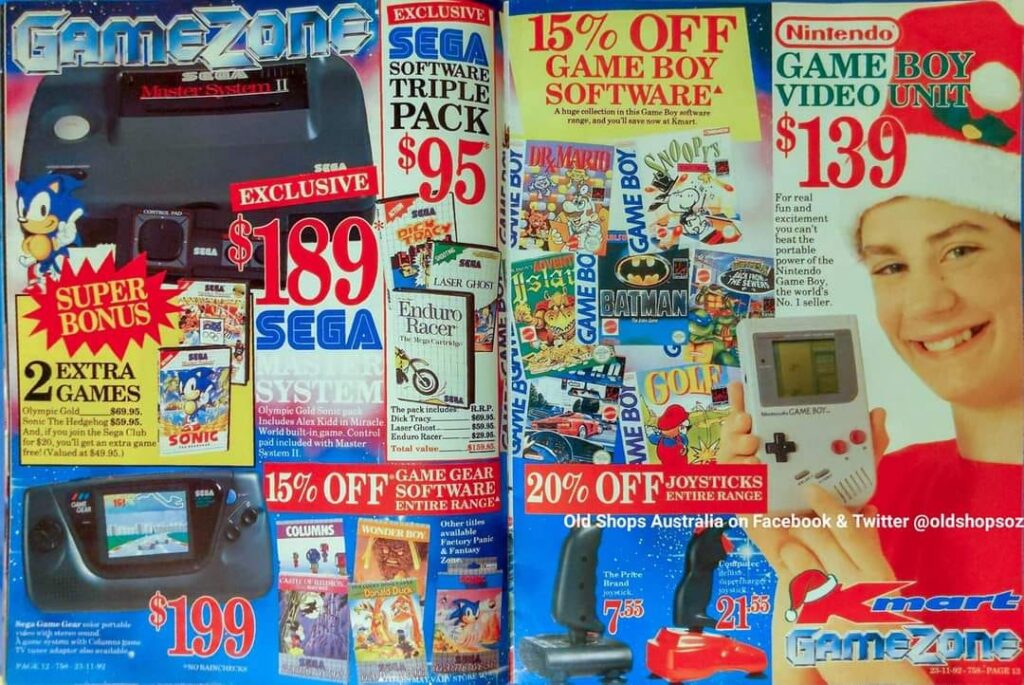
1992 sees Nintendo release their 16-bit console for hardcore gamers and rich parents, the Super Nintendo Entertainment System. It retails for $299 ($700 today). Initial Super Nintendo sales are sluggish in Australia
1992 see’s prices for consoles remain the same, but bundles often get better, especially the Master System bundles. It also see’s the release of Sonic II, that had over 100k pre orders.
Reviews in Aussie newspaper are for the Master System version, not the Mega Drive version.
Mattel refuses to release numbers to newspapers, but Sega claims to be the market leader selling over 230k total consoles. They also tell the media that the Sega Australia Hotline gets over 1200 phones calls a day!
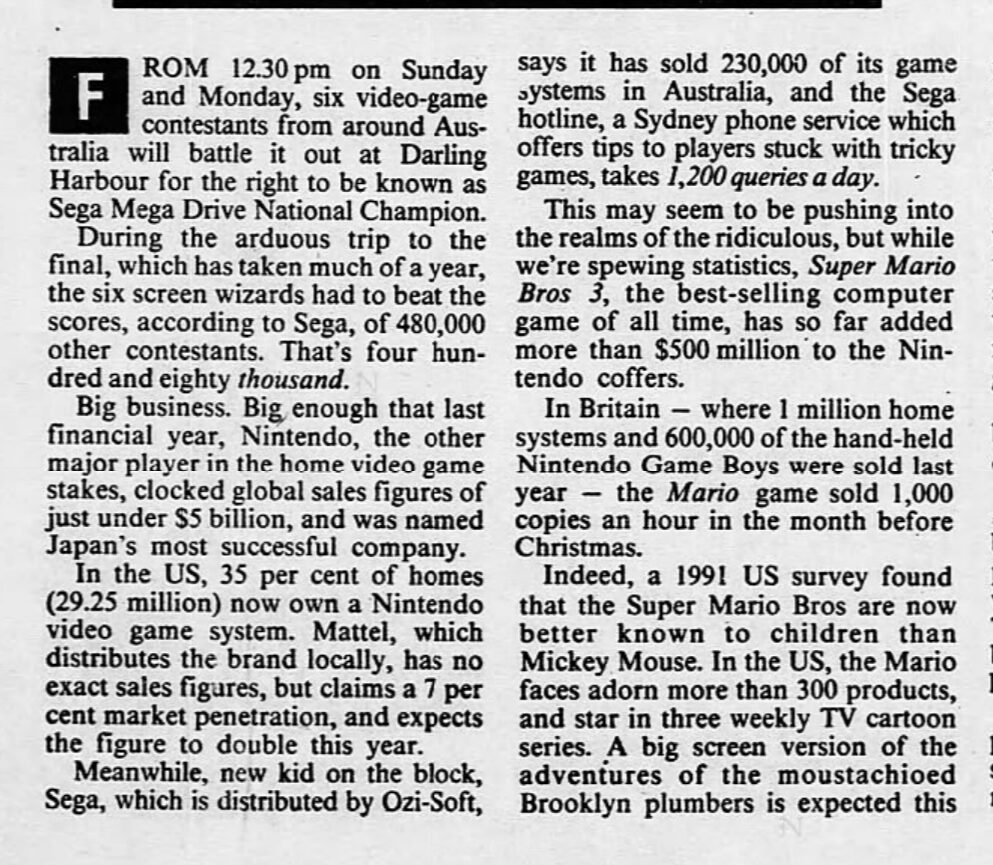
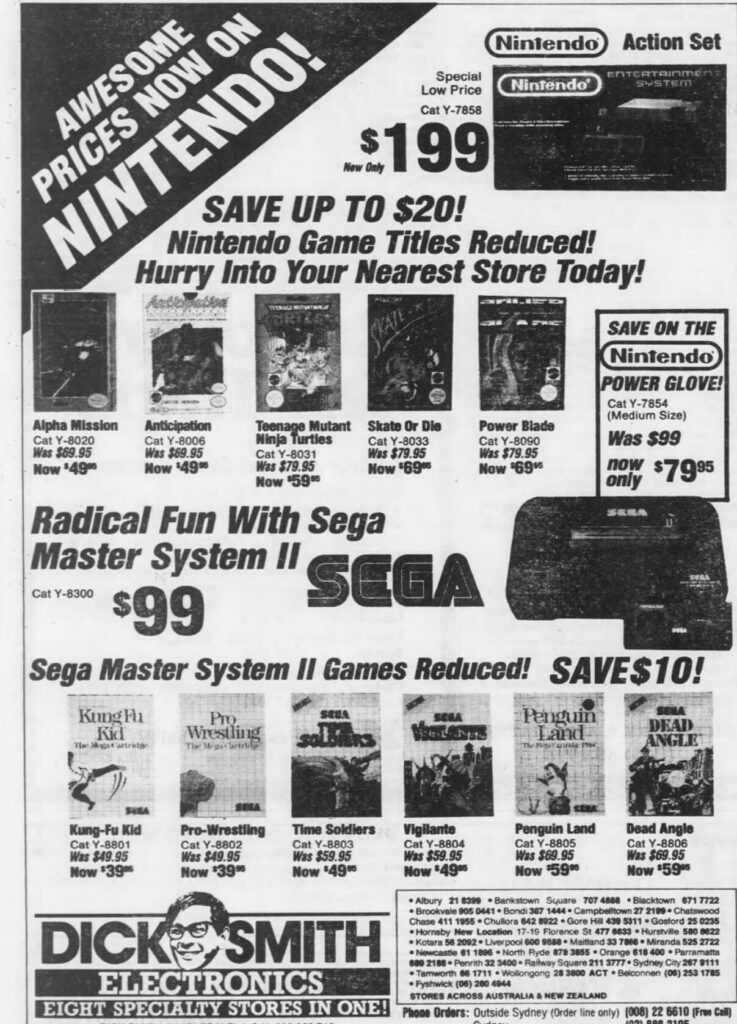
Another major retailer in 1992 announced that it would stock Sega products, and it was Myer. Before December 1992, Myer would only stock Nintendo products, it even represented 30% of all Nintendo sales in Australia! If Myer was your local major department store, chances are your neighbourhood was a Nintendo neighbourhood.
This is where Sega has moved ahead, as the Sega Mega Drive is the most successful hardcore expensive console in Australia, and the Sega Master System is the budget console of choice (and most popular console) in Australia.
Sega now control 45% of the Australian market, Nintendo 37% and Atari has now dropped to 8%. Nintendo does drop the price of the NES to $99 to match Sega, however no free game is bundled, but many kids also pick up NES in 1993.
1992 saw both the Mega Drive and SNES drop to a more manageable $199 ($460 today). 1992 also see’s Sega purchase half of Ozisoft, and the company becomes Sega Ozisoft, an official Aussie version of Sega.

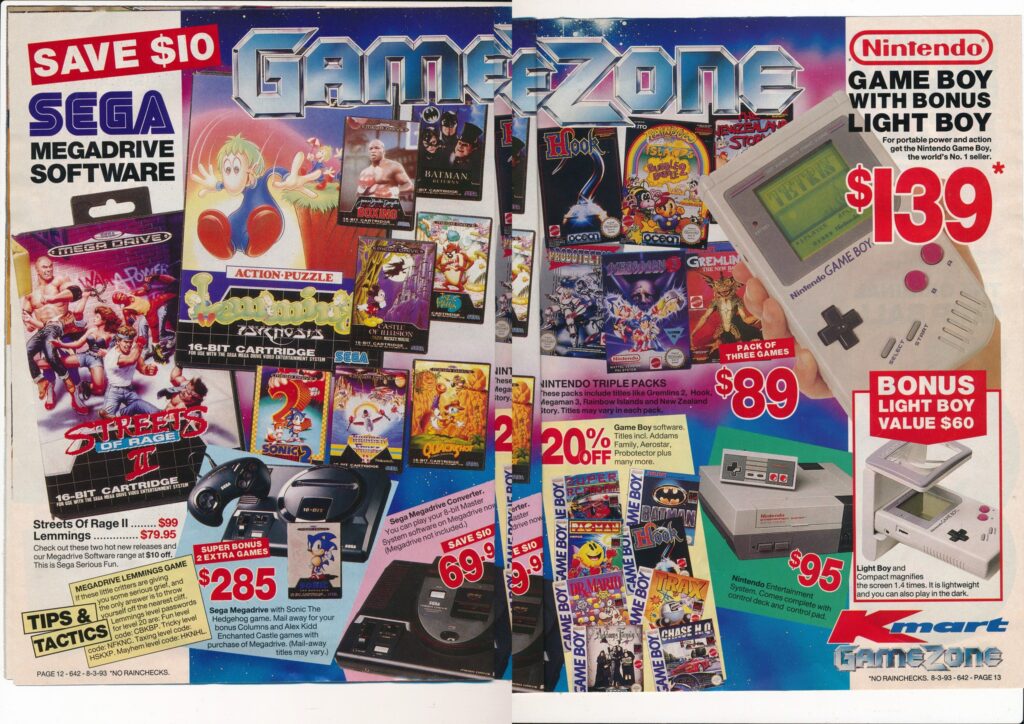
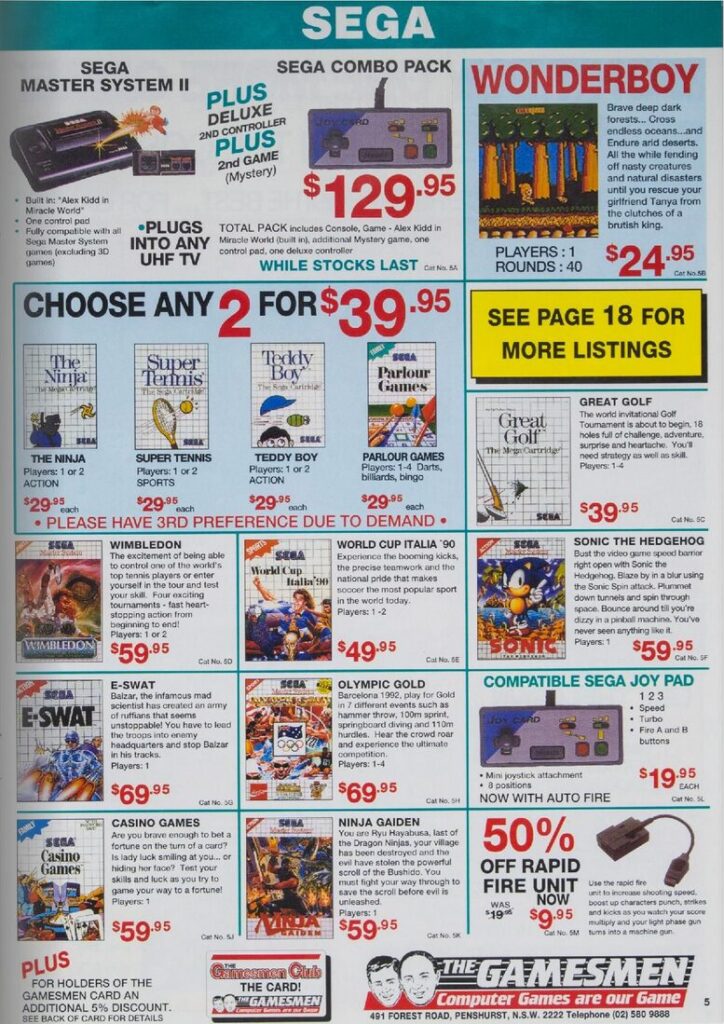
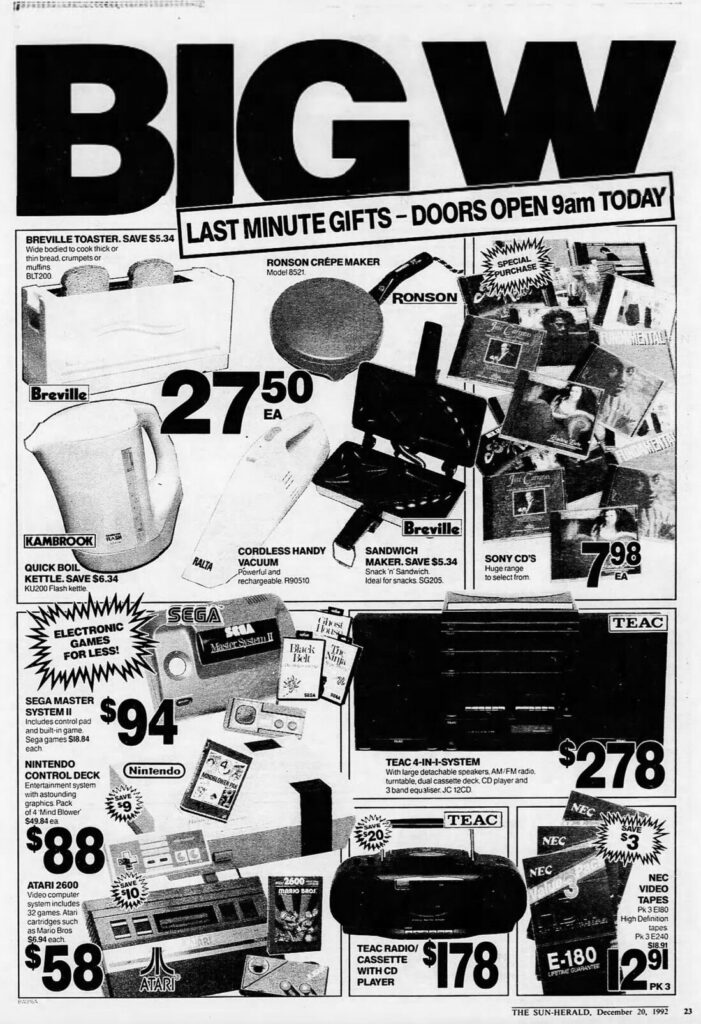
Budget Consoles for Aussie Christmas 1992 (Great for a recession)
-Atari 2600 $49 ($115 today)
-Atari 7800 $99 ($230 today)
-Nintendo Game Boy $149 game included ($350 today)
-Nintendo Entertainment System $129 ($300 today)
-Sega Master System $99 game built in ($230 today)
Premium Hardcore Consoles in 1992 (not good during a recession!)
– Atari Lynx $199 ($465 today)
-Sega Mega Drive $299 ($699 today)
-Super Nintendo $299 ($699 today)
-Sega Game Gear $199 ($465 today)
1993 also sees Sega open up an entire store in Melbourne, at Daimaru Melbourne Central.
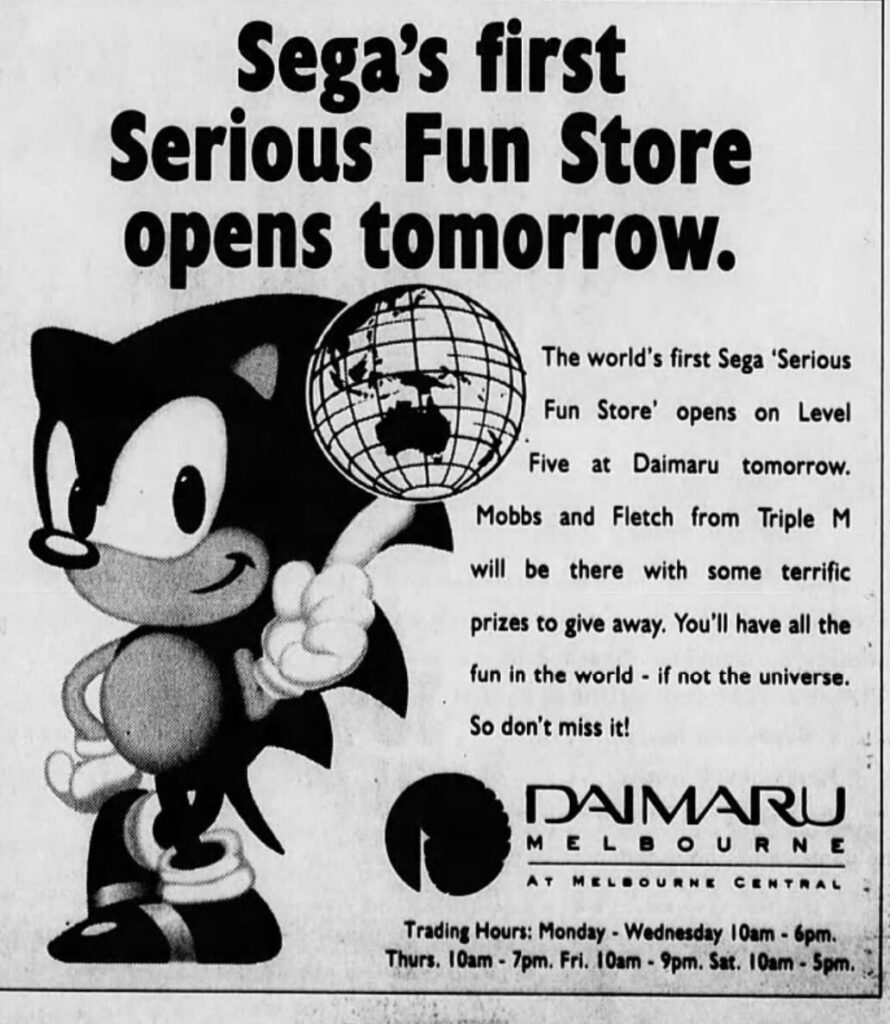
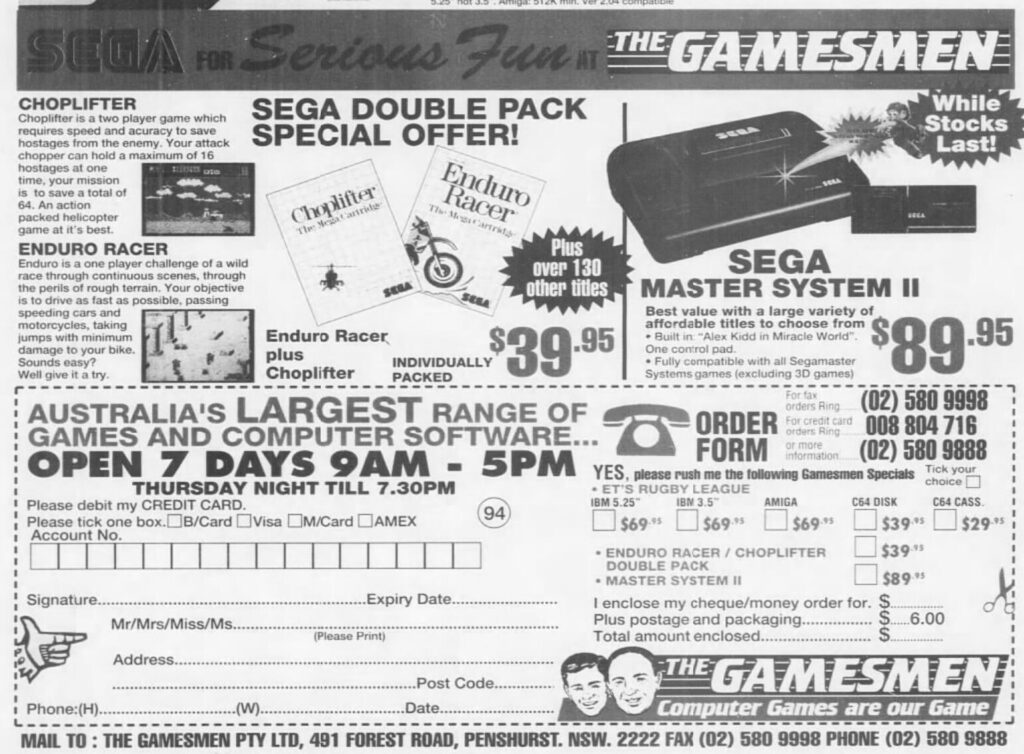
Nintendo announces in November 1993, that in January 1994, it is taking control of the distribution of Nintendo products, and ends its deal with Mattel in Australia. According to retailers, Sega now controls 65% of the Aussie market by November 1993.
“Nintendo’s commitment
“Nintendo Australia will begin operations in Australia on January 1 1993 with new managing director and former Mattel general manager Graham Kerry at the helm. Mattel will still retain the third party software licensing arrangement and the distribution network, but Nintendo Australia will bear the importing, marketing and advertising expenditure.
Nintendo’s commitment to the Australian market will stimulate industry growth, says Kerry.
“Mattel weathered the storm this year, but sales probably grew at an insufficient rate to make it a profitable market from the distributors’ point of view,” he said.
Although Sega did well out of Nintendo’s non-attendance in the Australian market, it believes its sales would have shown greater improvement if Nintendo had been a full participant.
Sega managing director Mr Kevin Burmeister said: “From our point of view, Nintendo just haven’t been present in the Australian market for a year now and the total value of the marketing spread has been significantly reduced.”
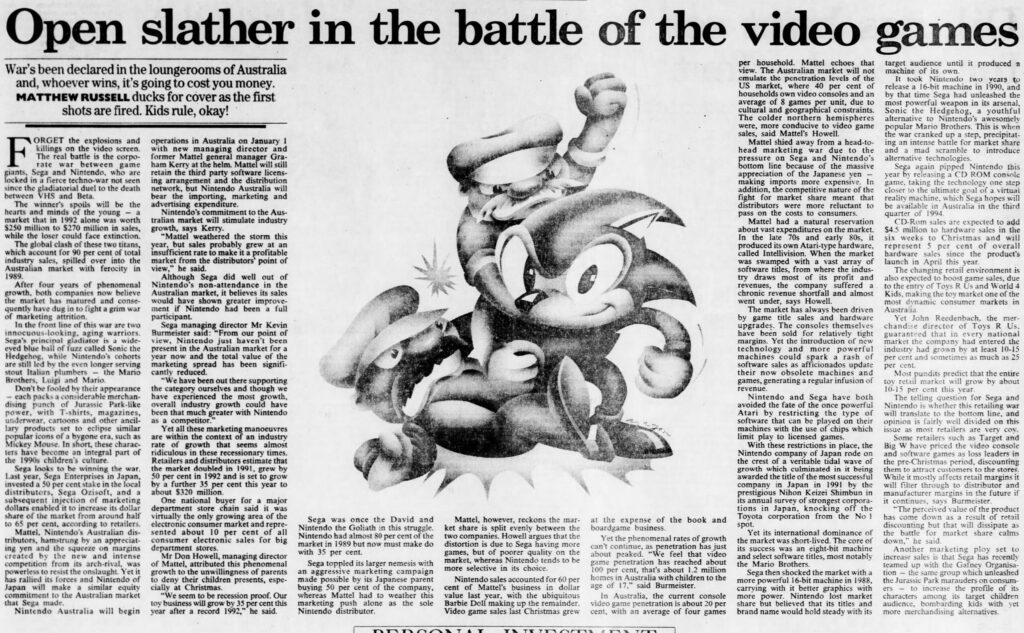
Sega also publishes its full numbers of consoles in its Mega Zone magazine for the Australian market.
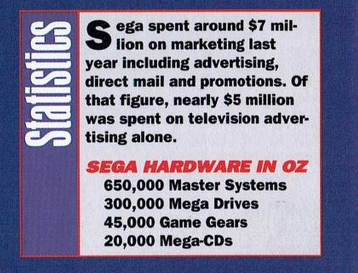
Sadly 1993 is the last big year for the Sega Master System as prices continue to fall to more acceptable levels for the SNES and Mega Drive. However many game shops continue selling Master System games until around 1996.
The Mega Drive line up becomes very strong during 1993 and 94, and Mega Drive sales surge. An uncensored version of Mortal Kombat appears, an amazing Sega version of Aladdin releases, Jurrasic Park is pushed hard by Sega (a very cool Master System game also releases), along side the mega hit of Sonic 2. Master Systems still sell during the Christmas of 1993 as a budget console, but the Mega Drive and SNES start to pick up.
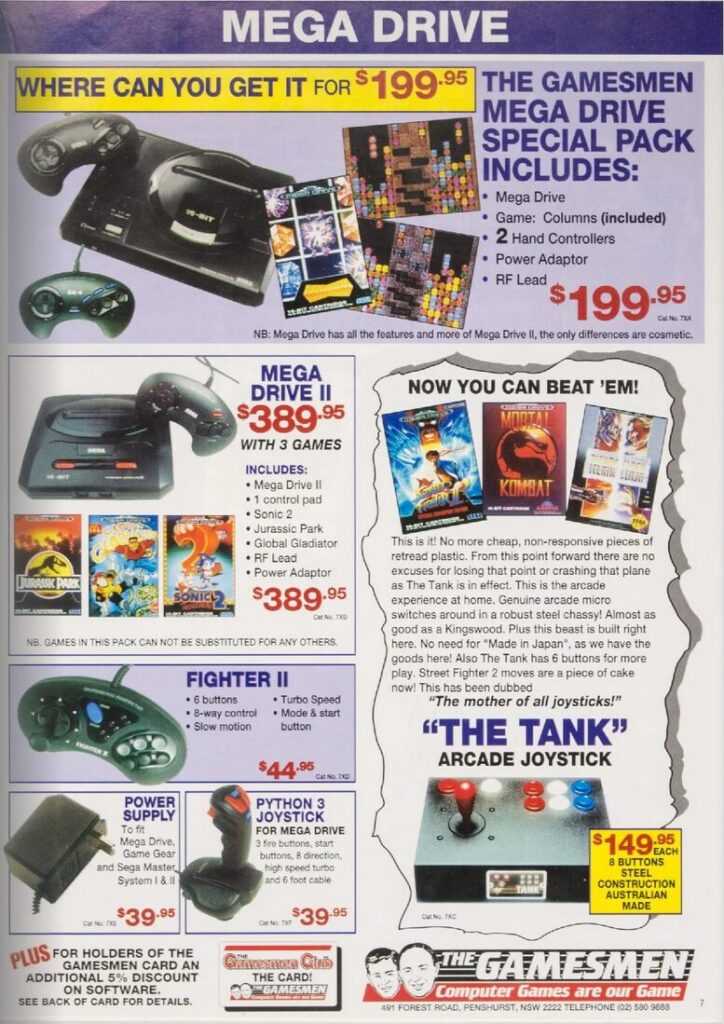


Both the Super Nintendo and Mega Drive are still $199 for the 1994 Christmas. Both consoles have some heavy hitters during 1993 and 1994. Many parents buy Mega Drives and Super Nintendos for their kids at Christmas, especially as the early 90s recession has now cleared. 1994 is the last push and Christmas Master System consoles are sold, however software continues for the next couple of years in limited shelf space and amounts.
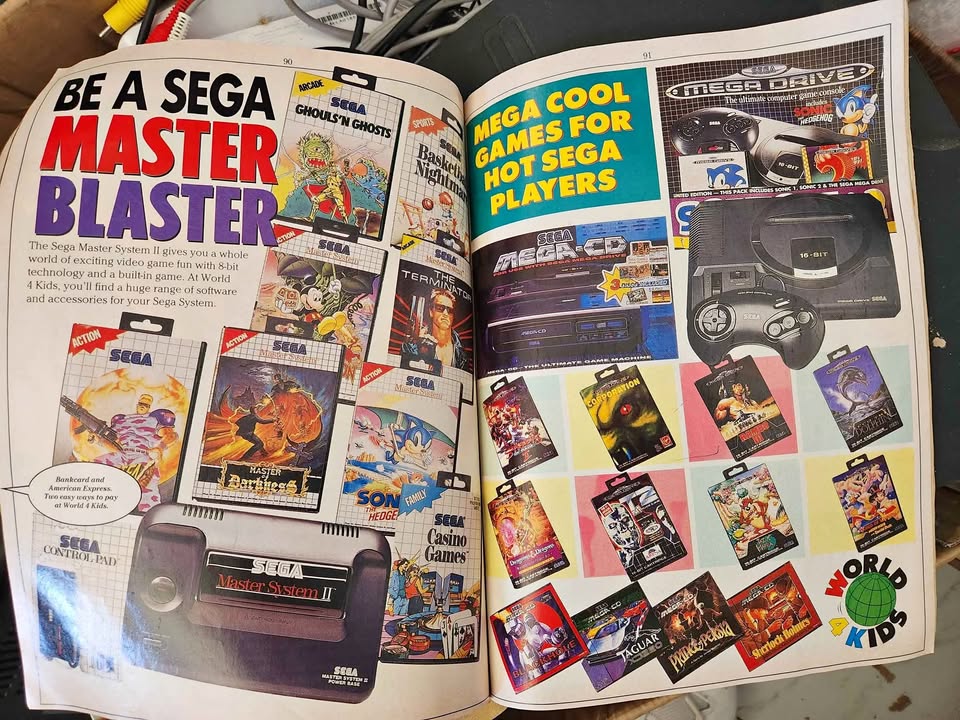
1995 is the end of Sega Master Systems as console that can be purchased, as both the Sega Mega Drive and Super Nintendo drop to $150 for the Aussie market. Both systems became the budget choice of console 90’s kids growing up from 1995 onwards.
The PlayStation 1 and Sega Saturn 32 bit consoles release in 1995, however Nintendo supports the Super Nintendo strong while Sega starts pulling support for software from the Mega Drive and Master System, and eventually the Super Nintendo sales go beyond the Mega Drive and Master System, as it becomes the default budget kids console with a mainstream price from 1995 onwards.
The PlayStation releases for $699 ($1500 today), and the Saturn for $799 ($1700 today), making the Super Nintendo and Mega Drive more appealing, but as Sega focused more on its 32X add on, and the Saturn, the Super Nintendo soldier on with new releases in 1995 such as Donkey Kong Country and Yoshi’s Island. The end of the Master System is here, and many kids now upgrade to a 16 bit machine, or beyond.
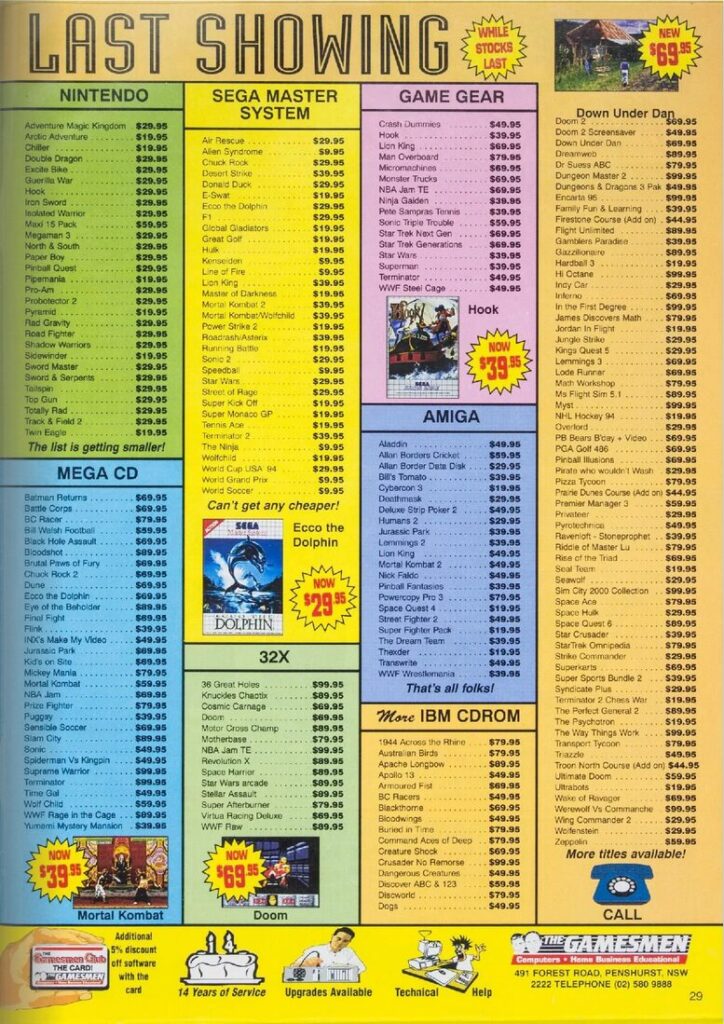
If you were a kid that grew up with the Master System, you grew up with an iconic console that only succeeded in few countries, mainly Brazil and Australia. It also sold very well in the UK, just slightly outselling the NES there.
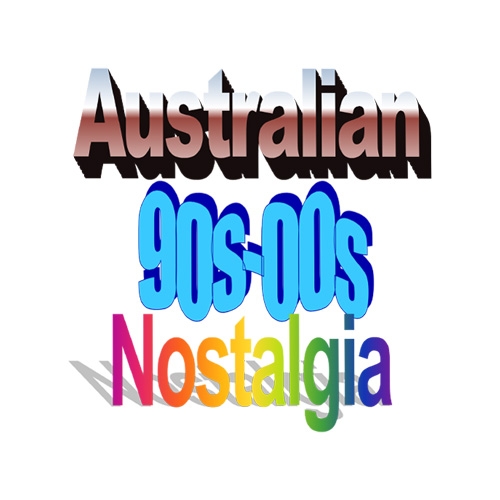
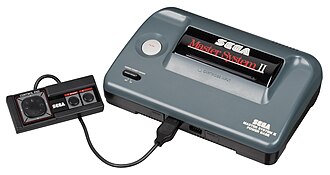
Leave a Reply